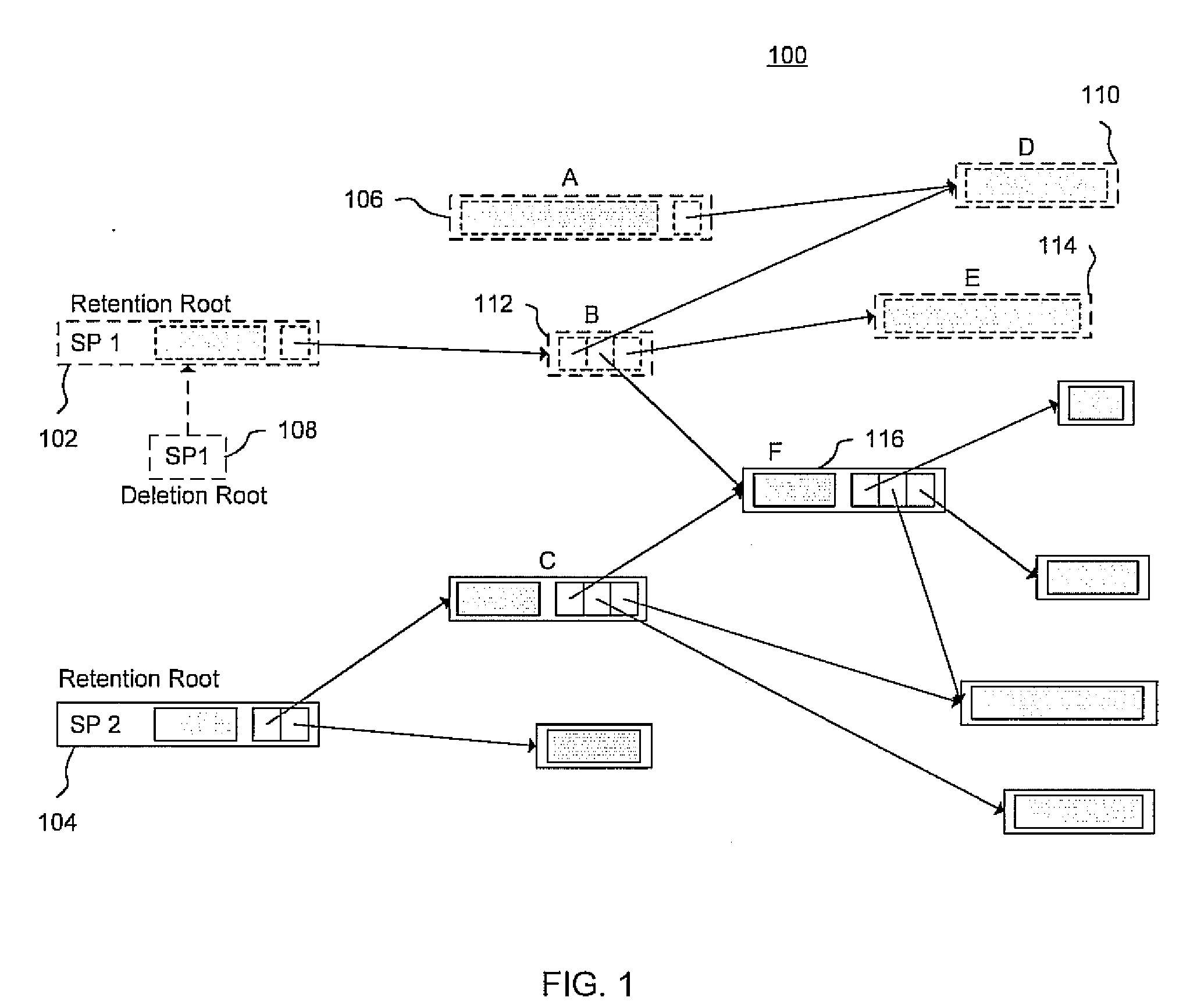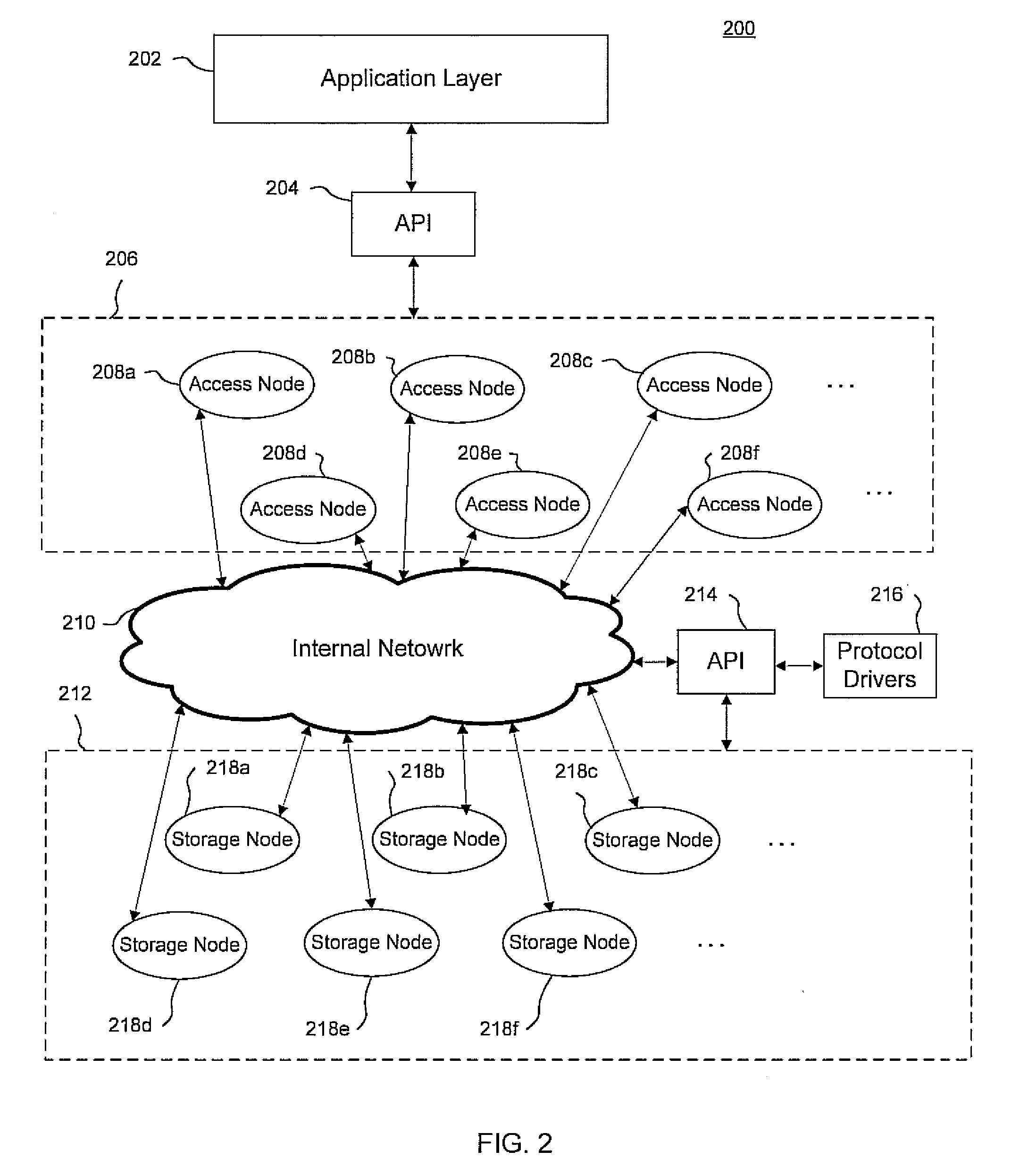Scalable secondary storage systems and methods
- Summary
- Abstract
- Description
- Claims
- Application Information
AI Technical Summary
Benefits of technology
Problems solved by technology
Method used
Image
Examples
Embodiment Construction
[0028]As indicated above, to satisfy commercial demands, distributed secondary storage systems should be capable of performing a variety of services, including: fast determination of availability of stored data (i.e. determination of whether it can be read or whether it is lost); support for multiple data redundancy classes; fast determination of data redundancy level for any given moment (i.e. determination of how many node / disk failures a given piece of data can endure without losing it); in the case of a diminished redundancy level, fast rebuilding of data up to a specified redundancy level; data writing and reading with a high level of performance; providing dynamic scalability by adjusting data location in response to changes in network configuration (for example, new nodes are added and / or old nodes are removed or failed); on-demand data deletion; and global, efficient duplicate elimination.
[0029]While any one of these data services are relatively simple to implement on their ...
PUM
 Login to View More
Login to View More Abstract
Description
Claims
Application Information
 Login to View More
Login to View More - Generate Ideas
- Intellectual Property
- Life Sciences
- Materials
- Tech Scout
- Unparalleled Data Quality
- Higher Quality Content
- 60% Fewer Hallucinations
Browse by: Latest US Patents, China's latest patents, Technical Efficacy Thesaurus, Application Domain, Technology Topic, Popular Technical Reports.
© 2025 PatSnap. All rights reserved.Legal|Privacy policy|Modern Slavery Act Transparency Statement|Sitemap|About US| Contact US: help@patsnap.com



